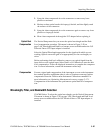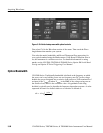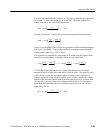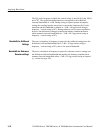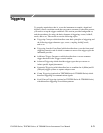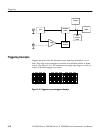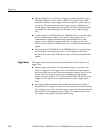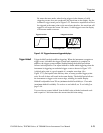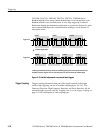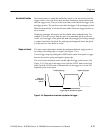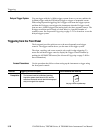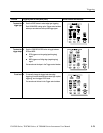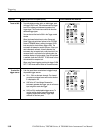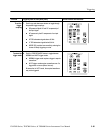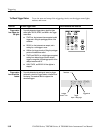
Triggering
CSA7000 Series, TDS7000 Series, & TDS6000 Series Instruments User Manual
3-75
Be aware that auto mode, when forcing triggers in the absence of valid
triggering events, does not synchronize the waveform on the display. See the
Automatic trigger mode part of Figure 3--22. Successive acquisitions will not
be triggered at the same point on the waveform; therefore, the waveform will
appear to roll across the screen. Of course, if valid triggers occur the display
will become stable on screen.
Triggered waveform Untriggered waveforms
Normal trigger mode Automatic trigger mode
Figure 3- 22: Triggered versus untriggered displays
Trigger holdoff can help stabilize triggering. When the instrument recognizes a
trigger event, it disables the trigger system until acquisition is complete. In
addition, the trigger system remains disabled during the holdoff period that
follows each acquisition. You adjust holdoff to obtain stable triggering when the
instrument is triggering on undesired trigger events as shown in Figure 3--23.
A digital pulse train is a good example of a complex waveform. (See
Figure 3--23.) Each pulse looks like any other, so many possible trigger points
exist. Not all of these will result in the same display. The holdoff period allows
the instrument to trigger on the correct edge, resulting in a stable display.
Holdoff is adjustable from 250 ns (minimum holdoff available) to 12 seconds
(maximum holdoff available). To see how to set holdoff, see To set holdoff on
page 3--84.
You can also set an auto holdoff. Auto holdoff varies with the horizontal scale
and is equal to 5 divisions times the current time/division setting.
Trigger Holdoff



